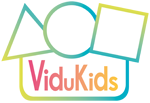Production
This is the most enjoyable part of the project. The children work autonomously on their videos. When using stop-motion, the app does a lot of the work. We fixed the camera with a tripod. Thus, the challenge was not to orientate the viewfinder so that it framed what they intended to record but to place the scenery and objects in the area framed by the camera. The children take pictures, and the app puts them in the correct order, one after the other. The children choose what they want to take a picture of and place and move the objects. The pedagogue scaffolds if needed. You must help the children understand that they should move things only slightly from one image to the next. Unexpected obstacles may occur.
Along the way, the children can check what the video looks like. Are they happy, or do they have to change something? They might be surprised to see that it takes so much less time to watch the video than to make it. What happens to the length when they take more pictures? If the children already have experience with stop-motion, they can experiment with the settings in the app. What happens to the video if we change the frames per second? It is common for each image to be displayed for 0.1 seconds, ten frames per second. In addition to the mathematical content, children have experiences with the mathematical aspects of how video works.





